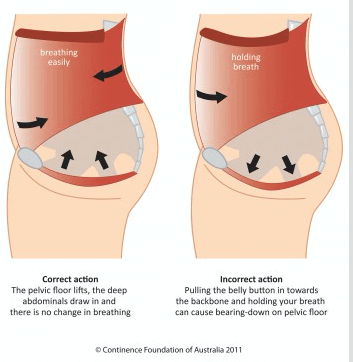Pelvic Organ Prolapse
PELVIC ORGAN PROLAPSE (POP):
Normally the bladder, uterus, vagina, and rectum are supported and held in place by the pelvic floor muscles.
POP is a condition where pelvic organs such as the bladder, uterus, or rectum descend and bulge into the vaginal wall due to weakened pelvic floor muscles and ligaments.
- Cystocele (Bladder Prolapse). This refers specifically to the prolapse of the bladder into the vaginal space. It is often associated with symptoms like pressure, discomfort, and urinary issues.
- Urethrocele: (Urethra Prolapse). While less common, urethrocele involves the prolapse of the urethra, the tube through which urine exits the body. This can lead to complications such as difficulty in urination and increased susceptibility to urinary tract infections.
- Rectocele: the rectum bulges into the back wall of the vagina. This causes constipation.
- Uterine prolapse: the uterus dropping into the vagina.
Causes:
- Childbirth: It typically happens as a result of carrying and vaginally delivering a child. This strains and weakens the pelvic floor. It's way more common than you think. It affects 1 in 9 women (about 52 million women). As many as 50% of women who’ve given birth experience some degree of prolapse.
- Aging: Natural aging processes can lead to weakening of supportive structures.
- Hormonal Changes: Reduced estrogen levels, especially during menopause, can contribute to tissue changes.
- Constipation (straining on the toilet)
- Heavy lifting (using incorrect technique)
- Chronic coughing
- Upper ab dominance
Many women might be living with symptoms without receiving a formal diagnosis, contributing to the need for increased awareness and proper examination, especially after childbirth.
Signs and Symptoms:
- Feeling constant pressure, like a misplaced tampon or that the tampon is about to fall out.
- Experiencing urine leakage during laughing, coughing, sneezing, or jumping.
- Frequent urination (more than 10 times a day).
- Incomplete emptying of the bladder.
- Chronic urinary tract infections (UTIs).
- Sensation of heaviness, especially during menstrual cycles.
- Painful sex
- "queefing" during sex
- difficulty initiating urine flow
- constipation
- Low back pain.
Solutions:
-
- Pelvic floor exercises help to strengthen the muscles that support the pelvic organs, including the bladder, uterus, and rectum.
- Breathing intervention
- TVA intervention
- Stop pushing out your pee. Let it naturally flow out. This will let you fully empty your bladder, this will allow you to sleep through the night without waking up to pee, and it will prevent urinary tract infections. It will also stop you from having to pee all the time.
- Get a potty squatty bathroom stool for more complete and easier elimination.
- Pelvic and Hip Stretches
- The CRP
- Stop wearing high heels
- Stop wearing Spanx compressive garments and waist trainers (it creates downward pressure on the pelvic floor)
- Exercise intelligently: don't overtrain, don't use a waist trainer, don't brace with your ribs and 6-pack, don't suck in your tummy (learn how to actually use your TVA), and don't hold your breath and bear down.
- See your doctor, ask for a referral to a urogynecologist or a pelvic floor physiotherapist.
Don't hold your breath. Take a look at the photo below to see how this can cause bearing-down on the pelvic floor (which can lead to urinary incontinence and other pelvic floor dysfunction).

